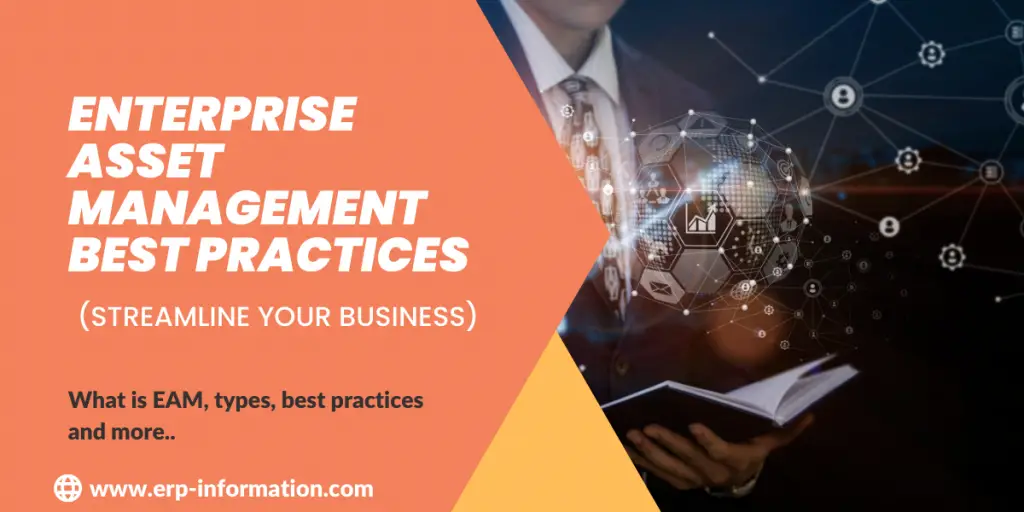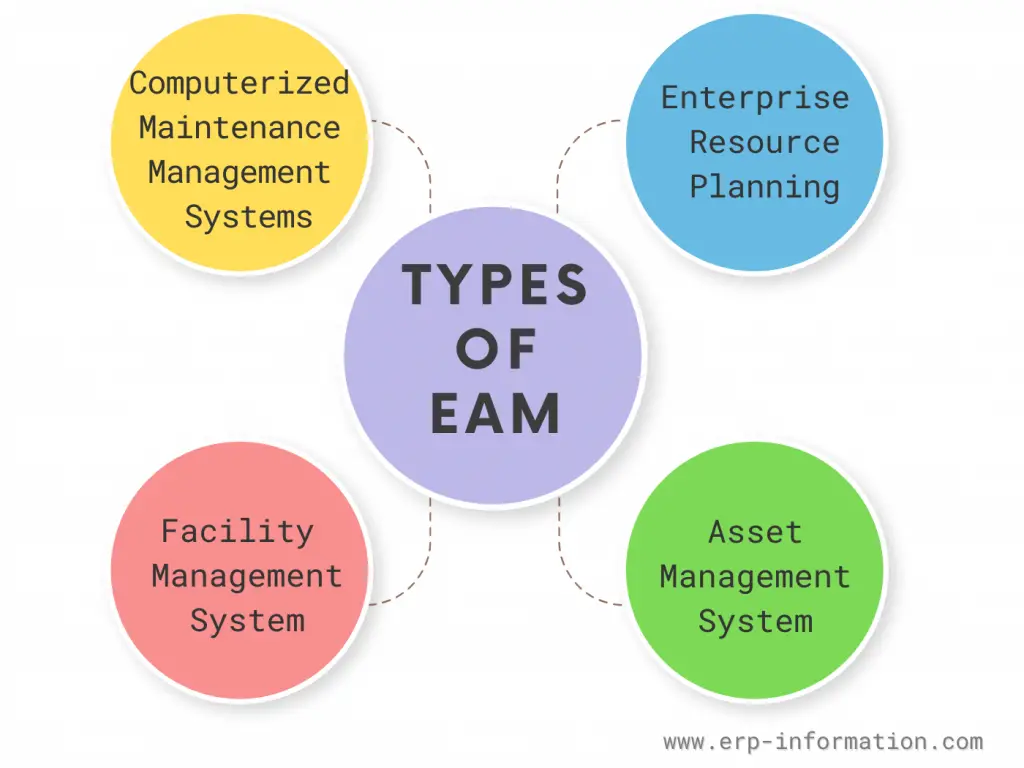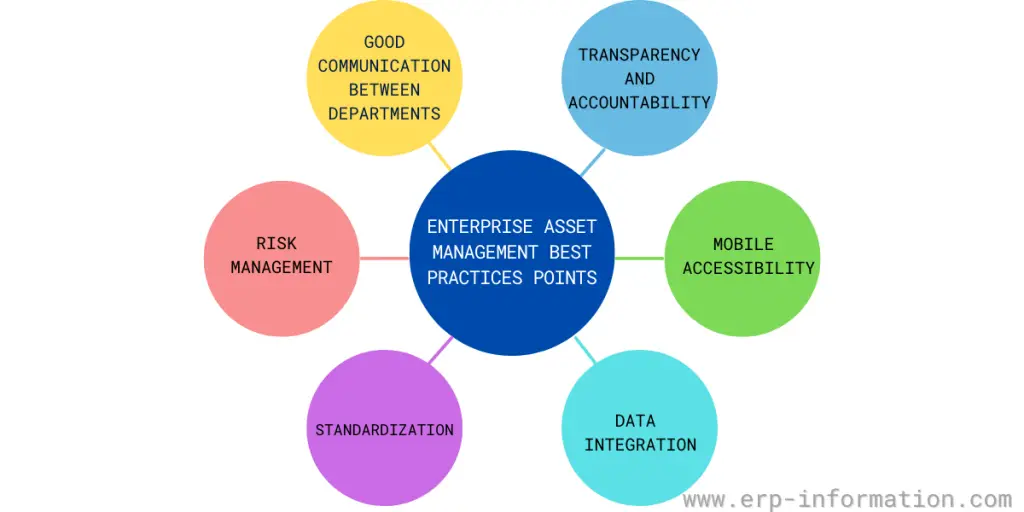It can be challenging to keep track of all your business’s assets and needs to function. Tracking and managing your company’s assets can be daunting without a streamlined system in place.
Enterprise asset management systems can help you track and manage your assets more effectively, identify potential problems before they happen, and make better use of your company’s resources.
Enterprise asset management best practices can help you take control of your company’s assets and keep your business running smoothly. This blog post lists some of the enterprise asset management best practices.
What is Enterprise Asset Management (EAM)?
Enterprise Asset Management (EAM) is a systematic process that helps organizations track and manage their physical assets.
By keeping track of their assets, organizations can more effectively plan for maintenance, repair, and replacement costs. Additionally, EAM can help improve decision-making around asset allocation and utilization.
The Different Types of EAM Systems
- Computerized maintenance management system (CMMS): A CMMS is a system that helps organizations track and manage their maintenance activities. CMMS can help improve decision-making around maintenance, repair, and replacement costs.
- Enterprise resource planning (ERP) system: An ERP system is a software application that helps organizations manage their business processes. ERP systems can help organizations track and manage their assets, inventory, and finances.
- Facility management system: A facility management system is a software application that helps organizations manage their facilities. Facility management systems can help organizations track and manage their assets, inventory management, finance, and maintenance activities.
- Asset management system: An asset management system is a software application that helps organizations track and manage their assets. Asset management systems can help organizations improve decision-making around asset allocation and utilization.
Organizations should select the enterprise asset management system that best fits their needs. Each type of system has its advantages and disadvantages.
For example, CMMS is typically better at tracking and managing maintenance activities, while ERP systems are better at managing business processes.
Facility management systems are better at managing facilities, while asset management systems are better at managing assets.
Enterprise Asset Management Best Practices
Here are some enterprise asset management best practices to get you started.
Good communication between departments
For EAM to be effective, all departments within an organization need to be on the same page. This means sharing information and creating a common understanding of ERP processes and how they fit into the EAM system.
Transparency and accountability
One of the most important aspects of good asset management is transparency. Organizations need to track their assets and know where they are at all times. This requires clear and concise records that are easy to access and understand.
By tracking and managing assets throughout their lifecycle, organizations can ensure that they are being used efficiently and effectively.
Mobile accessibility
Another critical best practice for asset management is mobile accessibility. With the advent of new technologies, more and more people use their mobile devices to access information and perform tasks.
Asset management software needs to accommodate this trend by being accessible on mobile devices. This will allow users to view information and perform tasks while on the go.
Data integration
Another best practice for asset management is data integration. For asset management to be effective, it needs to be able to connect with other systems and databases. This will allow information to be shared between different departments and across various organizations.
By integrating asset management with other systems, organizations can improve efficiency and make better decisions.
Standardization
One of the keys to successful enterprise asset management is standardization. This means having a consistent approach and methodology across all aspects of the organization, from processes and procedures to data collection and analysis.
By standardizing enterprise asset management practices, organizations can improve efficiency, optimize performance, and reduce costs.
Risk management
Risk management is a critical component of enterprise asset management. Organizations must identify and assess risks associated with their assets and put mitigation strategies to address these risks in place.
Tips for EAM Implementation
- Defining the business case for EAM – Organizations should first define the business case for EAM. This will help to ensure that the right solution is chosen and that the project has a clear ROI.
- Selecting the right Enterprise asset management software – Several different EAM software solutions are on the market. Organizations should take the time to evaluate their options and choose the solution that best meets their needs.
- Implementing a pilot project – EAM can be a complex process to implement. Organizations should consider starting with a pilot project to ensure that the implementation is successful. Even before a real pilot, you can consider having a conference room pilot (CRP).
- Training employees – Employees will need to be trained on using the EAM system. This training should cover all aspects of the system, from data entry to reporting.
- Defining processes and workflows – EAM can be used to automate several different processes and workflows. Organizations should take the time to explain these processes and workflows before implementing the system.
- Integrating EAM with other enterprise systems – EAM should be integrated with other enterprise systems such as ERP and CMMS. This will ensure that data is consistent across all systems and that processes are streamlined.
- Establish Key Performance Indicators (KPIs) – KPIs should be established to track the performance of the EAM system. This will help identify areas where the system is performing well and areas that need improvement.
- Continuously review and improve enterprise asset management processes and procedures – Organizations should constantly review and enhance their EAM processes and procedures. This will ensure that the system operates optimally and that assets are being managed effectively.
Organizations that implement these best practices will be well on their way to realizing the full benefits of EAM. EAM can help organizations save money, improve asset utilization, and reduce risk when implemented correctly.
Conclusion
Enterprise asset management is a term used in business and information technology that describes the practice of managing company assets. In most cases, these assets are physical objects, such as machines, buildings, or land.
EAM systems track the life cycle of an asset from its creation or acquisition to disposal or retirement. Best practices for enterprise asset management can help your company get the most out of its EAM system and improve asset management processes.


